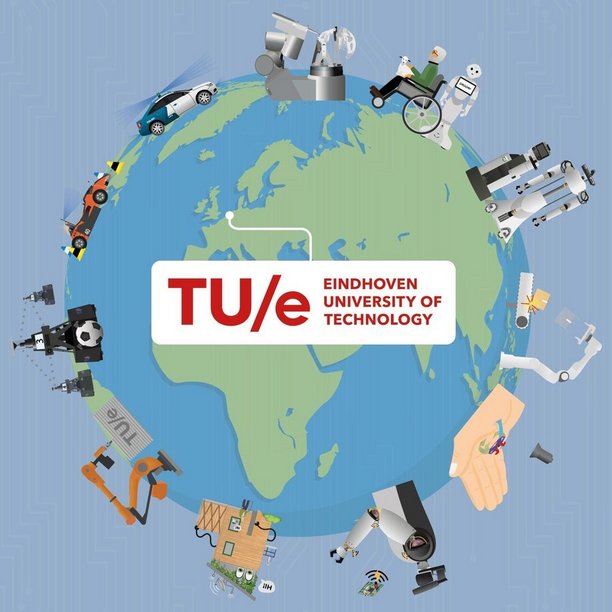Elena Torta wants to teach robots how to deal with chaos, and that's "a huge challenge"
In part one of our end-of-year interview series we talk with Elena Torta about her fascination with robots and their interaction with humans.
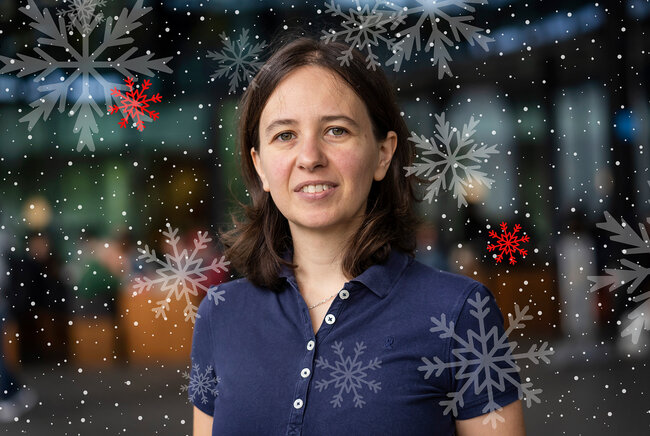
What does an autonomous robot need to know and do to help people? And how do you teach robots to deal with chaos? Those questions are at the heart of the work of Elena Torta, assistant professor at the Control Systems Technology research group. Anyone seated across from her sees an inspired and passionate scientist. Ten years ago, the Italian moved to Eindhoven for her doctoral research on cognitive, autonomous robots and human-robot interaction. She conducted research on how care robots can help older people live independently for longer.
Once she gained her PhD, Torta swapped the scientific world for industry. But after spending five years working at ASML, since 2019 she has been back at her "old" home base. Her focus has broadened from robots in healthcare to robots in the workplace in general. That could be anywhere: in an operating theater, a factory or in a warehouse.
As for her return to the university, she has one condition: Torta wants to do research where there is a direct link to the real world. "That is my intrinsic motivation, the interaction between robots and humans interests me immensely. More and more robots will enter the workplace. If that’s not to do with how they can serve to complement the work that humans do, it’s to do with the labor shortage that we’re facing. That development is already underway, and in our research group, we want to help steer that in the right direction."
ABOUT THIS SERIES
The year 2022 was an eventful one in many ways, both on a scientific and societal level. In this end-of-year interview series, four TU/e researchers look back and look ahead based on four themes (sustainability, diversity, health and artificial intelligence) that filled newspaper columns last year. What was the highlight of 2022 for them, what are they looking forward to in 2023, and what do they think are the main challenges in their fields? In addition to Elena Torta, we also spoke with Roy van der Meel, Floor Alkemade and Margriet van der Heijden. This series was created in collaboration with Innovation Origins.
From a controlled to an uncontrolled environment
There are a lot of developments taking place in the field of robotics and AI research. For one thing, the role of artificial intelligence is growing, Torta says. "It used to be that in a controlled environment, such as in a warehouse or factory, a robot had to perform one repetitive task over and over again. Nowadays, we are bringing robots more and more into uncontrolled environments, such as nursing homes for the elderly, on the road, or in factories where they work alongside people on a production line."
In order to perform their tasks properly, it is very important for the robot to understand what is going on around them in their surroundings. This is also immediately the biggest challenge within this research field, not just in 2023, but for the coming five to ten years: predicting what the world around the robot will do. "Creating a system where robots can gain that same level of cognition is very difficult."
In order to perform their tasks properly, it is very important for the robot to understand what is going on around them in their surroundings.
For example, it is very trivial for humans to reach a table in a cluttered kitchen and pick up a cup. That is not the case for robots. Dealing with the unknown clutter in the environment to navigate safely to the table is a challenge on its own. “If we consider the recognition of the cup on the table and the planning and execution of the grasping movement, we face a very intricated challenge for robots”, Torta adds.
A medical robot that drives itself to and from the operating table whenever needed
Yet is precisely because huge strides are being made in many different disciplines such as computer vision, machine learning and control that more and more theories are emerging that will bring robots closer to the level of cognition that humans have.
One of Torta’s students, Saray Bakker, developed a control algorithm for an image-guided therapy robot that knows autonomously how to move from its parking spot to the operating table (and vice versa) before and after surgery. It’s one of the highlights of the past year for Torta. "It's the first time such time of robot is capable of doing this. It's a prime example of a successful collaboration between industry and academia, and why I like it so much." This research took place within the AMBER project. Torta is working with Philips IGT to achieve this. The goal is to develop a new generation of medical robots that perform non-medical movements autonomously, which thereby lets the surgeon concentrate more fully on an operation.
The project addressed control and world modelling aspects. The robot relied on a simplified representation of the environment to determine which space was occupied by objects and which not. Based on this information a control algorithm was developed to let the robot reason how it should move to avoid obstacles with all parts of its body and successfully reach the operation table. The project is now continued by three other students.

The project addressed control and world modelling aspects. The robot relied on a simplified representation of the environment to determine which space was occupied by objects and which not. Based on this information a control algorithm was developed to let the robot reason how it should move to avoid obstacles with all parts of its body and successfully reach the operation table. The project is now continued by three other students.
Between dystopia and utopia
A lot of misconceptions still persist about robots in the workplace, Torta notes. "People often have two scenarios in their minds. Either they think robots will take over all the work, or they think that at some point robots will be able to do everything humans can do." The Control Systems Technology research group believes that reality falls somewhere between these dystopian and utopian scenarios. Torta: "We recognize that robots have limitations, but also think that they can provide a lot of added value in many work processes. Not in the place of human workers, but alongside them."
We recognize that robots have limitations, but also think that they can provide a lot of added value in many work processes. Not in the place of human workers, but alongside them.
This vision is reflected in a research proposal Torta is writing together with other researchers from TU Delft, TU Twente, the Radboud University and the Erasmus University. The idea is to adopt a interdisciplinary approach to designing robot-worker relations to shape the future of robotized work in a way that is meaningful and beneficial for workers. With this proposal, the universities want to qualify for the Gravitation grant from the Dutch Research Council (NWO). This grant serves to promote excellent research in the Netherlands. Torta hopes the subsidie will be awarded in 2023.
Life on campus
A few of the highlights this year included being able to visit companies again with her students, the laboratory being back in full swing, and the campus coming back to life. "It was the first year in which we really came out of the pandemic. I'm very much looking forward to 2023 being a full year without any lockdowns and other restrictions and to see our laboratory continue to grow. Landing the Gravitation grant would absolutely be the icing on the cake.”
Torta expects - and hopes - that we will encounter more and more robots in the workplace in the future. These robots will gain more and more awareness of the environment in which they function, and will become increasingly more flexible in coping with change. "Apart from increasing productivity, robots can also make work for people more challenging and nicer, by taking over repetitive tasks, for intance."
Media contact
More on AI and Data Science
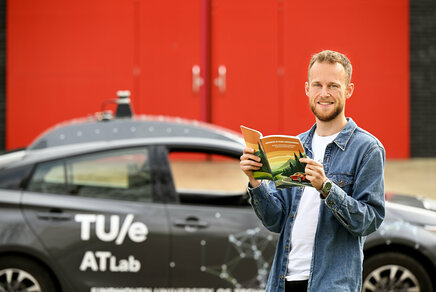
![[Translate to English:]](https://assets.w3.tue.nl/w/fileadmin/_processed_/e/1/csm_Beintema_Gerben_EE_PO_VH_4007%20%281%29_a6974ea62b.jpg)
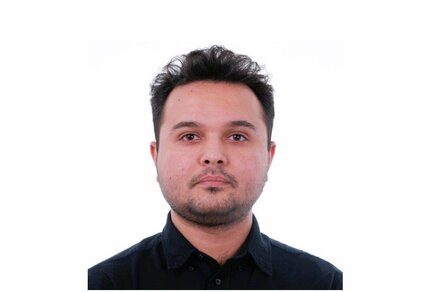
Latest news

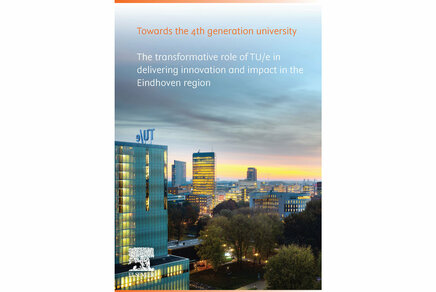
![[Translate to English:] [Translate to English:]](https://assets.w3.tue.nl/w/fileadmin/_processed_/e/6/csm_Hendriks%20Banner%20image%20Photonic%20crystal%20fiber-tip%20sensor%20BvOF_9b4093b84b.jpg)
